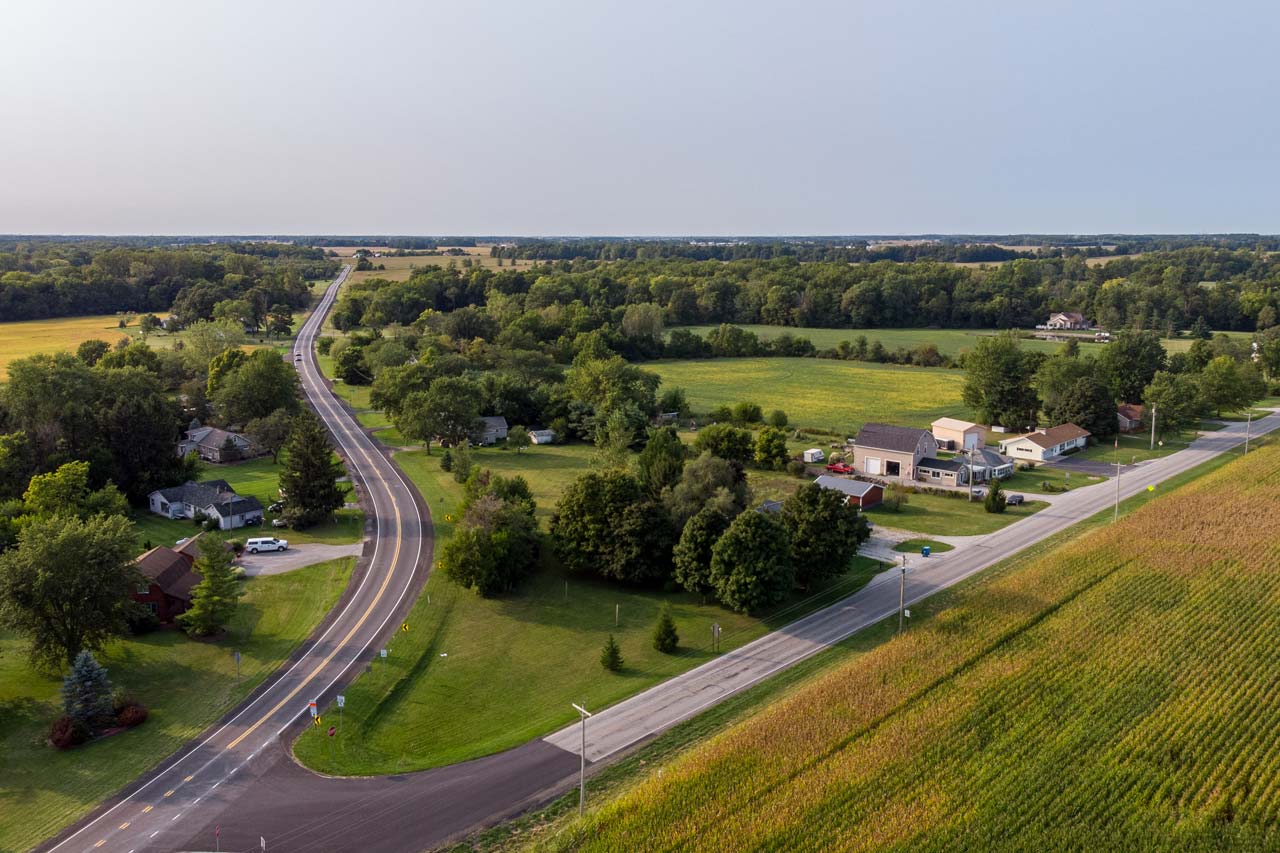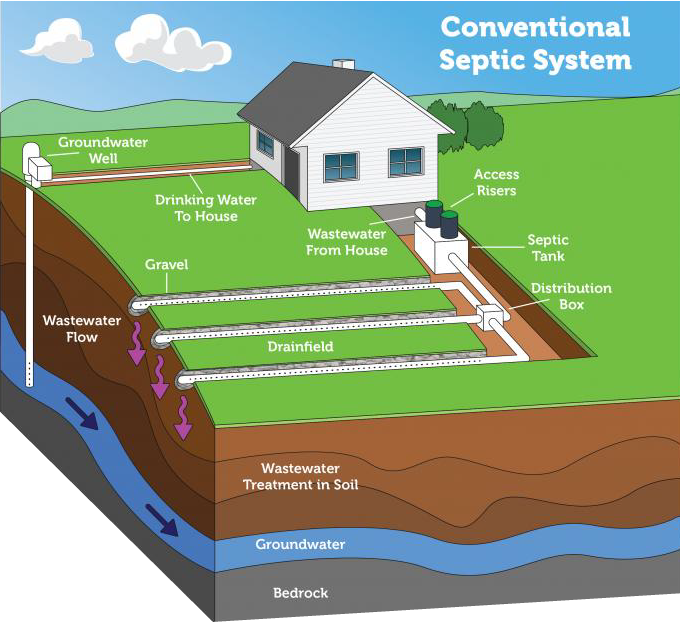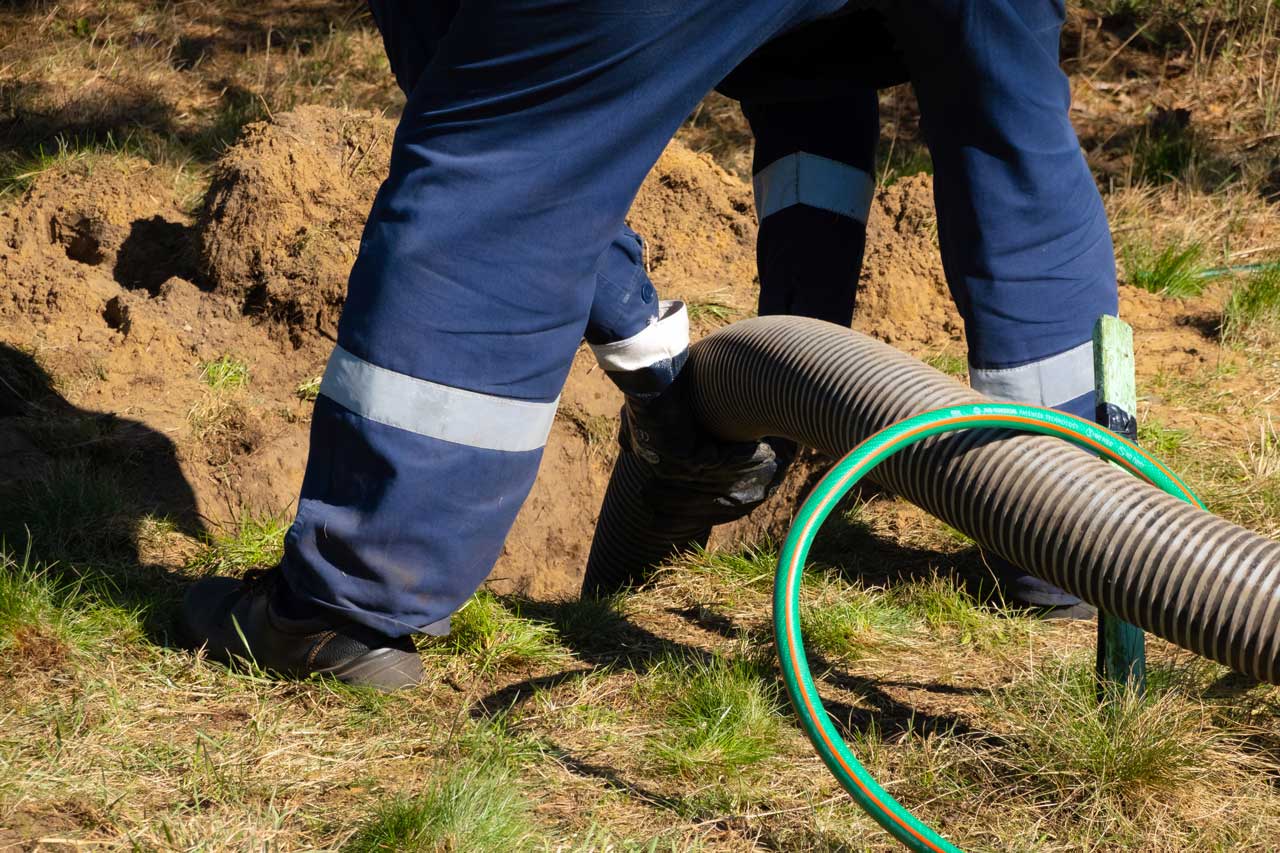Septic Elimination
There are thousands of older and failing septic systems throughout the state of Indiana. Failing systems often create a public and environmental health hazard. Untreated wastewater enters waterways, pools in yards and can even seep into the drinking water table. “Septic Elimination” is the process by which older and failing septic systems are decommissioned and replaced with new sanitary sewer infrastructure. Areas with some density of homes, older septics, known Health Department violations and general proximity to existing sanitary sewer infrastructure are ideal areas for septic elimination.

Septic Elimination Efforts
Septic elimination efforts, while critically important, can be uniquely challenging projects to initiate and manage. At BCS Management, we understand the delicate nature of these projects and the financial concern they can present to homeowners. Our septic elimination projects pursuit process facilitates ongoing communications with property owners, educates and seeks financial assistance programs where required. Our goal is to make these projects possible in an affordable manner.
Is your community challenged by failing septic systems? Contact us to discuss possible options for your unique situation.
General information about septic systems and sanitary sewer installation.
Septic Systems in Indiana
Septic systems are a type of simple onsite sewage facility for the treatment of household wastewater. A properly designed septic system typically consists of an underground chamber (septic tank) followed by a filtering system such as a leach field or drainfield. The drainfield is to provide effluent absorption or purification before the wastewater reaches the groundwater, relying on the earth itself to filter household wastewater.
Hundreds of thousands of septic systems throughout Indiana are more than 30 years old. Most of these systems either do not contain a drain field or are no longer functioning as designed. These failing systems cause untreated sewage to reach the waterways and groundwater creating a serious public and environmental health issue. In many areas, water testing reveals e-coli in the water table of greater than 200,000 ppm; less than 200 ppm count is considered safe.
Key Points on Septic Systems
- Septic systems are only a temporary solution.
- Septic systems may last 30-40 years if properly maintained.
- Discharging pollutants and contaminants into the Earth is an antiquated notion.
- The presence of a septic system may detract from the resale ability of your home.

Considerations for Failed Systems
Homeowners who recognize that their onsite septic system has failed are faced with two primary choices – replacement of the individual onsite system or septic elimination by way of installation of a sanitary sewer system. Neither of these options are the “better or right solution” and in some instances neither is logistically or financially feasible.
Areas with smaller lot sizes, a higher density of homes in a relatively small geographic area and proximity to existing sewer lines are ideal for septic elimination by installation of sanitary sewer. Most county health department sanitarians have several of these areas identified throughout their county. Initiating, and most importantly, financing these projects can prove to be a real challenge in most areas. That is where our process, which goes beyond engineering and technical design, is critical to the success of these projects.
- Minimum lot size must be met
- Appropriate soil types required
- Installation cost $13,000 – $20,000+ and maintenance costs
- Appropriate for large, rural properties
- Geographic proximity to existing infrastructure or treatment plant is critical
- Building count and density is considered
- Initial connection costs and monthly service charges
- Appropriate for smaller lots with higher count/density of homes
- Maintenance is obligation of the service provider
Types of New Sanitary Collection Systems
The more frequent, and more preferred method of providing sanitary sewer service to a home or business is a system of underground pipes leading away from the facility (downhill by gravity). Once the sewage reaches the public sewer system in the nearby streets, roadways or sometimes a dedicated easement, the sewage will then continue toward a treatment facility. The provision of sewer service does not need any pumping or other equipment by the property owner and is low in operational and maintenance costs over the life of the system.
In some situations, due to terrain or topography, a home or business can not send their sewage to the public sewer system without the help of pumping equipment and pressurized piping. These homes or businesses are located downhill or at an elevation lower than the nearby public sewer system. In these instances, an underground grinder pump station is located nearby that takes sewage from the facility and pumps it up to the public sewer system. Once the sewage reaches the public sewer system in the nearby streets, roadways or sometimes a dedicated easement, the sewage will continue toward a treatment facility. Sewer service for these homes or businesses require the extra pumping equipment and small diameter pressurized pipelines in order to work successfully and requires electricity and regular maintenance over the life of the system.

Timeline for Sewers
Sanitary sewer or water projects do not move quickly. Most are initiated by either a Health Department citation or a petition from homeowners to a municipality with interest in extending sanitary sewer service to the area. Either of these events will trigger research of the area followed by an informational meeting with the residents.
The entire process from initiation to connection to the sewer takes no less than 18 months and often closer to 24 months. See more detail on this process on our Communications and PR page.
Homeowner Responsibility
Actions must be taken by homeowners in order to connect to the sanitary sewer.
